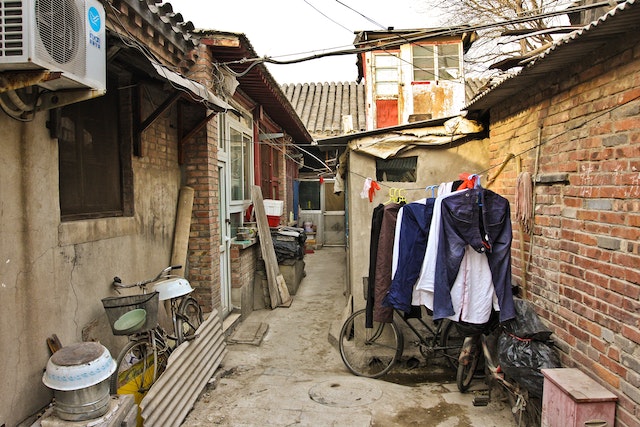Our homes are sanctuaries, providing comfort and safety for our families and us. However, what happens when our homes harbor unhealthy environments? An unhealthy house environment is one in which various factors may affect our health and well-being, such as poor air quality, mold, pests, and chemicals. While these issues may seem minor, they can significantly impact our health.
For instance, poor indoor air quality can trigger allergies, asthma, and other respiratory problems. At the same time, mold exposure can lead to eye and skin irritation and respiratory issues. That’s why it’s crucial to be aware of the signs of an unhealthy house environment and take steps to address them before they become a more serious problem.
1. Indoor Air Quality
Breathing clean air is essential to our health and well-being, and our homes play a vital role in providing fresh air. Unfortunately, many homes harbor pollutants that can compromise indoor air quality, such as dust, pet dander, pollen, and chemicals from cleaning products.
Signs of poor indoor air quality can range from unpleasant odors and stuffy air to more severe symptoms like headaches, fatigue, and dizziness. Fortunately, there are several steps we can take to improve indoor air quality. By making these changes, we can create a healthier home environment for ourselves and our loved ones.
2. Asbestos Exposure
Asbestos is a naturally occurring mineral commonly used in building materials until the 1980s. While it was once prized for its heat resistance and durability, asbestos exposure can be hazardous. The inhalation of asbestos fibers can cause various health problems, including malignant mesothelioma, which affects the lining of the lungs, abdomen, and heart.
Unfortunately, many older homes still contain asbestos, insulation, flooring, and roofing materials. So, it’s crucial to be aware of the potential sources of asbestos in your home and take steps to manage the risk of exposure. By doing so, you can help protect the health and safety of you and your family members.
3. Dampness and Mold
Dampness and mold are common problems that many homeowners face. And they can significantly impact our health if left untreated. Dampness occurs when there is excess moisture in the air or on surfaces, while a mold is a fungus that grows in damp or humid environments. Both dampness and mold thrive in poorly ventilated areas, such as bathrooms, basements, and attics.
Signs of dampness and mold include a musty smell, water stains, peeling paint or wallpaper, and visible mold growth. If left unaddressed, dampness and mold can lead to respiratory issues and other health problems. It’s essential to address any sources of excess moisture, such as leaks or standing water, and improve ventilation in affected areas. Any visible mold growth should be cleaned and removed promptly to prevent it from spreading.
4. Pests and Rodents
Pests and rodents are every homeowner’s most common worry when maintaining a healthy house environment. These uninvited guests can carry diseases, cause property damage, and create an unsanitary living space. Common household pests and rodents include ants, cockroaches, mice, and rats. Signs of an infestation may include droppings, urine stains, gnaw marks, and the presence of nests or burrows. Prevention and control of pests and rodents involve:
- Taking measures such as keeping the house clean and free of clutter
- Sealing off entry points
- Using traps or baits
Sometimes, calling in a professional pest control service may be necessary to help eliminate the problem.
5. Household Chemicals and Toxins
Our homes are filled with various cleaning products and other household chemicals that we use daily. While these products may help us keep our homes clean and fresh, they can also contain harmful toxins that may adversely affect our health.
Common household chemicals and toxins include bleach, ammonia, and air fresheners, which may irritate the skin, eyes, and respiratory system. Signs of exposure may include coughing, headaches, dizziness, and skin irritation. Fortunately, safer alternatives to these products are just as effective in keeping our homes clean and fresh. For instance, natural cleaning products made from vinegar, baking soda, and essential oils are a great alternative to traditional cleaning products.
6. Water Quality
Water is essential for our health and well-being, but not all water is derived and filtered equally. Poor water quality can lead to various issues, from an unpleasant taste and odor to potential health risks. Some common water quality issues include high chlorine levels, sediment, and hard water.
Signs of poor water quality can consist of a strange taste or odor, discolored water, and a buildup of mineral deposits on fixtures and appliances. Luckily, there are specific steps you can take to improve your water quality. These may include installing a water filtration system, regularly cleaning your fixtures and appliances, and testing your water for potential contaminants.
Conclusion
Maintaining a healthy house environment is crucial for your and your family’s well-being. By taking simple steps like improving indoor air quality, managing moisture, and preventing pests, you can ensure a healthy and safe living environment for everyone. Regular cleaning and maintenance can also go a long way in preventing the buildup of harmful pollutants and allergens in your home. It’s important to stay vigilant and take action to address any signs of an unhealthy house environment. By doing so, you can enjoy the comfort and safety of your home without worrying about potential health hazards.
